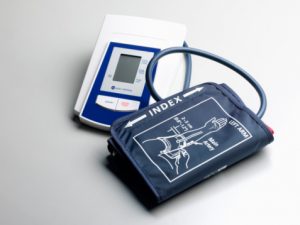 Having high blood pressure – hypertension – is a dangerous condition because it increases your risk of experiencing a deadly heart-related event. A person can live with high blood pressure without experiencing symptoms until it is too late, which is what makes hypertension that much more threatening.
Having high blood pressure – hypertension – is a dangerous condition because it increases your risk of experiencing a deadly heart-related event. A person can live with high blood pressure without experiencing symptoms until it is too late, which is what makes hypertension that much more threatening.
This is why it’s so important to monitor your blood pressure regularly, especially if you have other risk factors that contribute to high blood pressure such as sleep apnea, being overweight, a family history of heart disease, eating poorly, being stressed out, or if you’re physically inactive. But if you aren’t measuring your blood pressure correctly, that can affect your mode of treatment, or you could still be living with a high risk for a heart-related event.
Advertisement
Here are the most common and effective ways to measure blood pressure to ensure you are getting the most accurate reading.
Common and effective ways to measure blood pressure
Automatic blood pressure monitors:
These are the most common devices to measure blood pressure. These devices have a microphone to detect the blood pulsing in the artery. A cuff is wrapped around the person’s arm and inflates so that it becomes tighter. This type of device can be purchased for in-home use or found commonly in pharmacies and supermarkets. Measuring your blood pressure from the arm is far more effective than monitoring it through your wrist. This doesn’t mean that wrist cuffs are ineffective, but they are more commonly used for those with a disability who cannot use an arm cuff.
Manual blood pressure monitors:
This type of monitor is the one you find hanging in your doctor’s office. Similar to the automatic devices, a cuff is strapped to a person’s arm, but rather than having it inflate with the push of a button, your doctor manually pumps it. Your doctor will place a stethoscope to listen to the pulse, which occurs as the blood flows again. The blood pressure is then read on a gauge.
Ambulatory pressure:
This device is worn throughout the day and will automatically measure your blood pressure. This form of blood pressure monitoring isn’t very common and is mainly used among those who suffer from “white-coat hypertension.” This is when a person’s blood pressure tends to be read higher when they are in the presence of a doctor as a result of nervousness. This can portray inaccurate readings and cause a person to be put on medication even if they don’t have true hypertension. Therefore, monitoring your blood pressure throughout the day can help you obtain a more accurate reading.
Your blood pressure readings will determine what type of device you need and how often you need to measure it. Your doctor can assist you with these questions.
Related: Understanding blood pressure readings key to overall well-being
